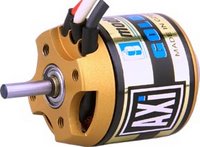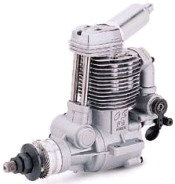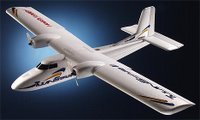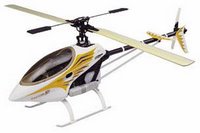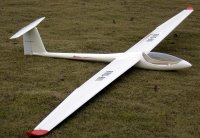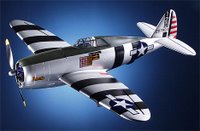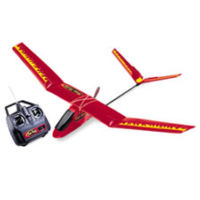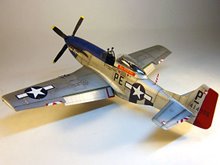
Okay, we're getting really close to your first takeoff:) Let's talk about the remote controller now. It looks complicated, but trust me, it isn't. First look at the two handles (located at the black circles). Those two handles can be moved in all directions. The left one controls the throttle and the rudder. You're thinking how can one handle controls two things? Well like i said it can be moved in all directions, but primary moves are forward-backward and left-right. Those can, of course, be combined during flight. Actually, they will be combined during the whole flight. For example, if you want to maintain a certain speed, you will have to keep the throttle at the same position. When you want to turn your RC plane you will also move the handle left or right, so those two actions are combined.
The throttle controls the power of your RC plane. So, if the throttle handle is more forward, you're getting more power. The all the way forward position is 100% power, and all the way back is idle.
The rudder is a control surface attached to the vertical stabilizer. It rotates the plane around the vertical axis (z-axis). In a real airplane the rudder is controlled via pedals. To make a turn, rudder is combined with the bank control, but we'll talk about that in the "How to fly a RC plane model" section.
The right handle controls the attitude of your RC plane, meaning the pitch and the roll. Like the left handle, this one also moves in all directions, also has primary directions forward-backward, left-right, which can be combined. Moving it forward will pitch the RC plane down, and moving it backward will pitch the plane up. As you can see, the pitch rotates the plane around the x-axis. Moving it left will bankroll the plane left, and moving it right will roll the plane right. It rotates the plane around the y-axis.
The other switchers you can see on the controller can be used for varied functions, which will be explain in your RC plane manual.
Taking all this into account, it can be tricky to fly the RC plane, but the trick is to practice those moves on the controller, followed by some short flights and you will get the hang of it really fast. Also keep in mind that the controls will feel sensitive an the beginning, but you will get used to it.



